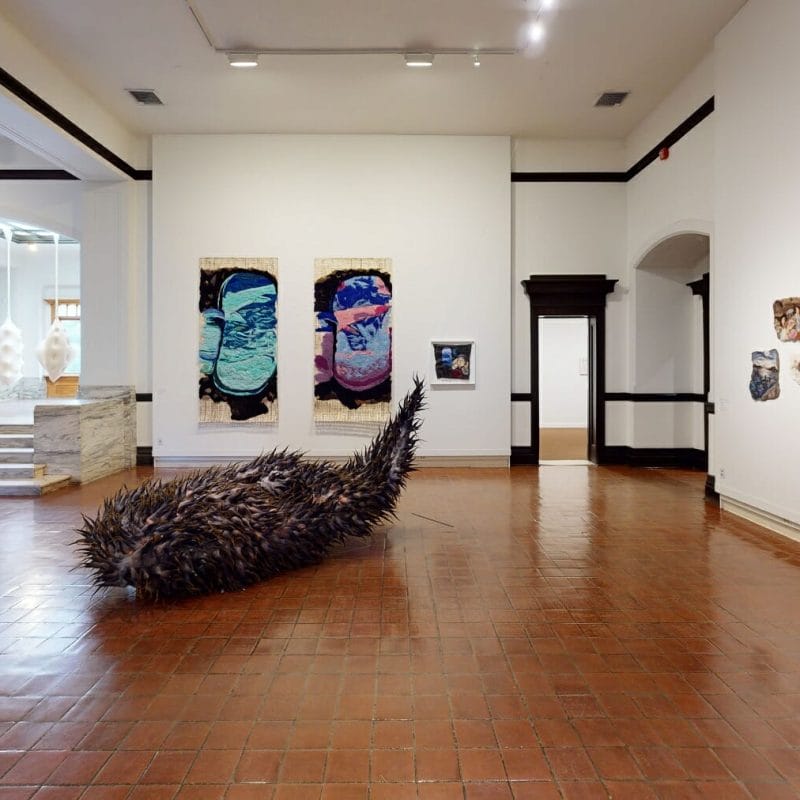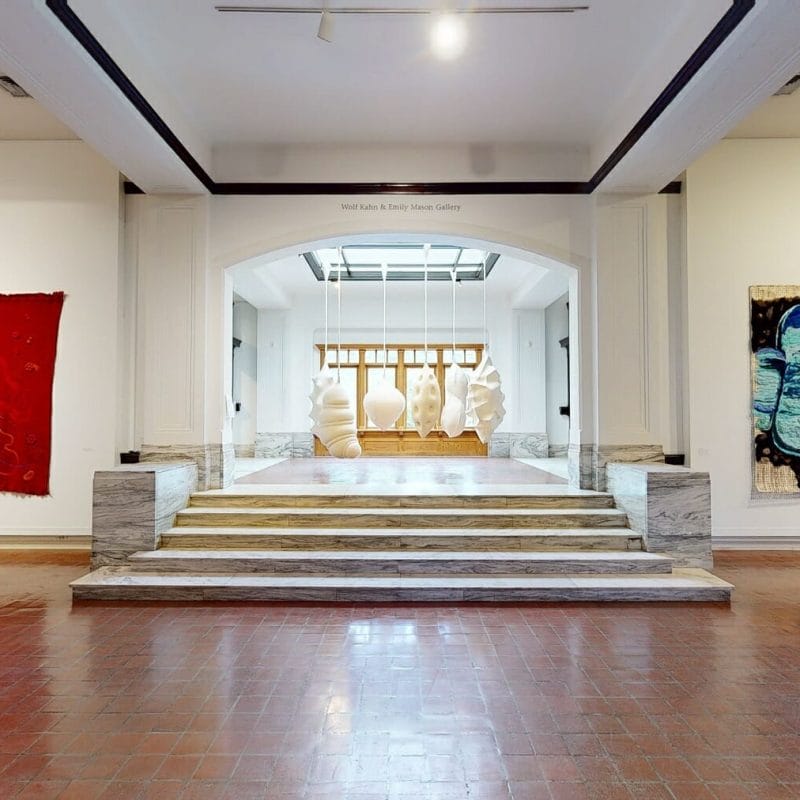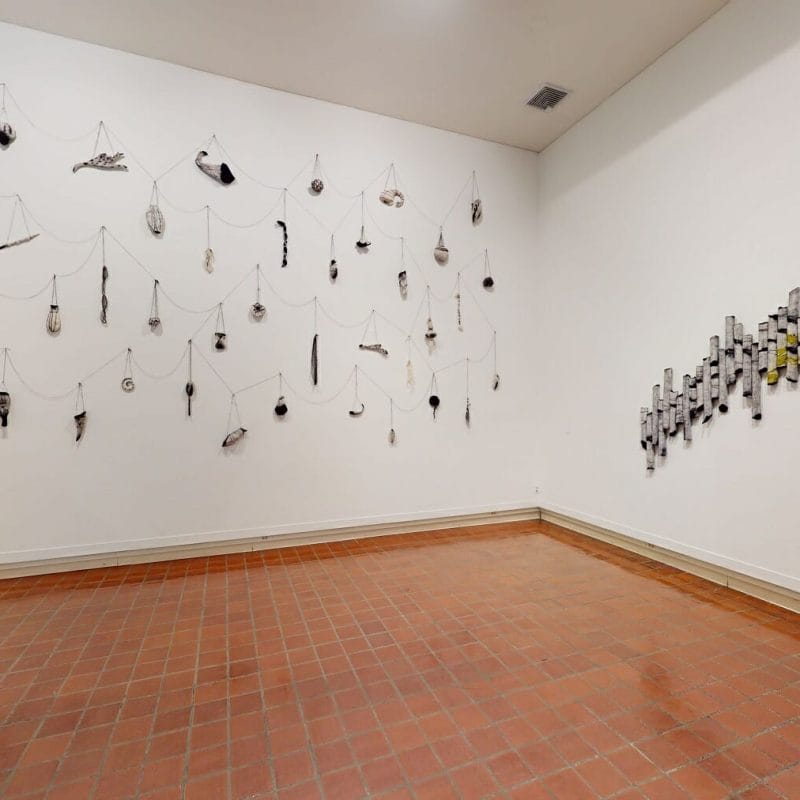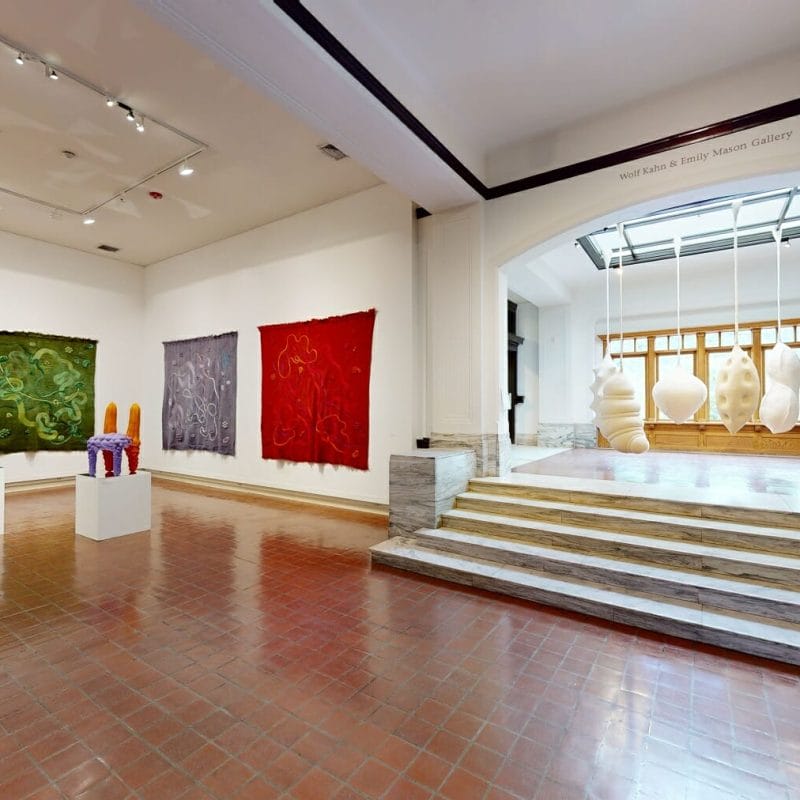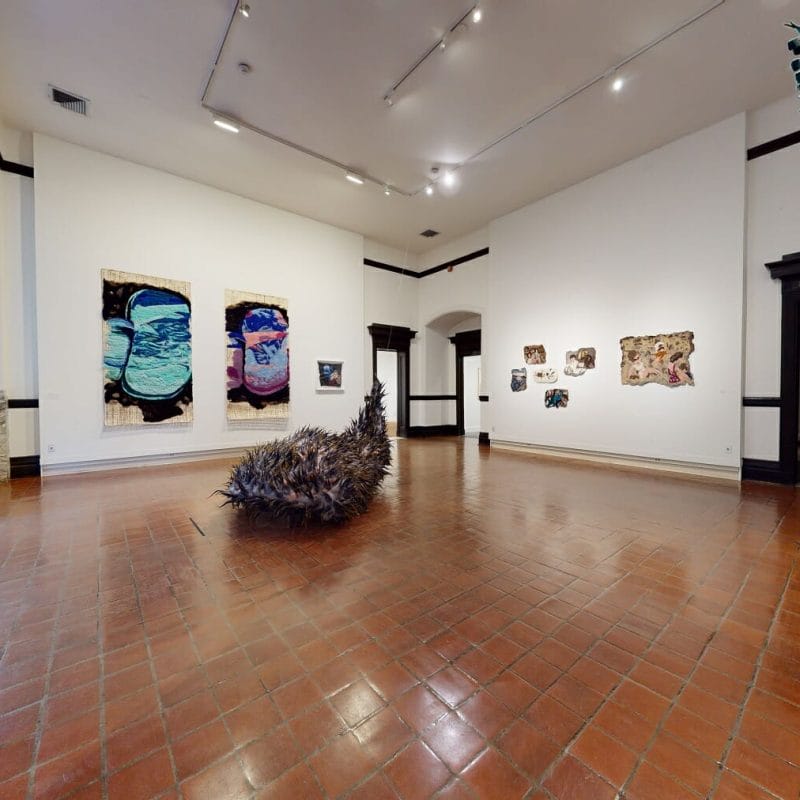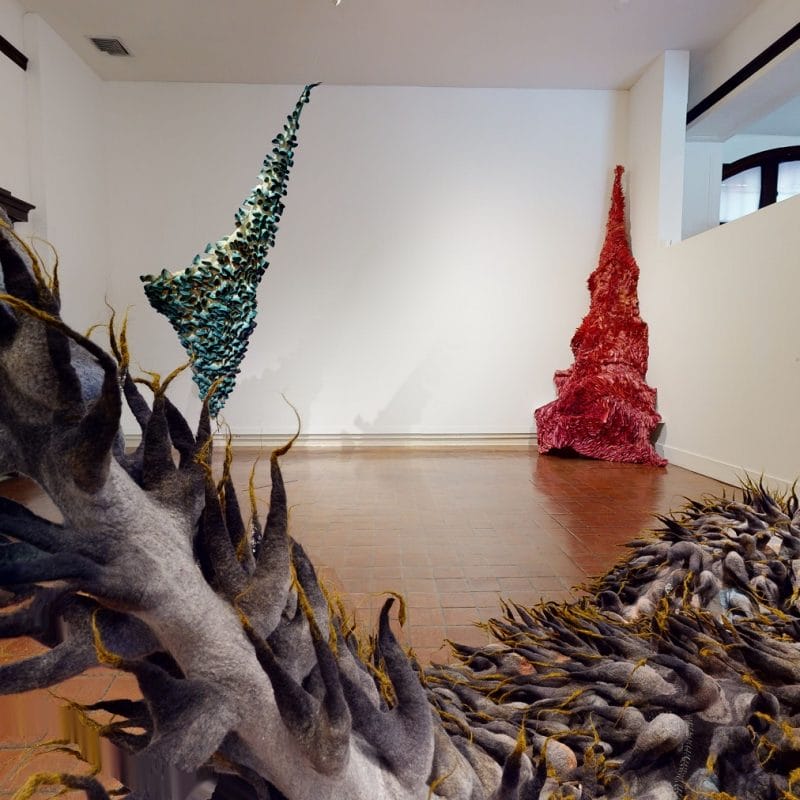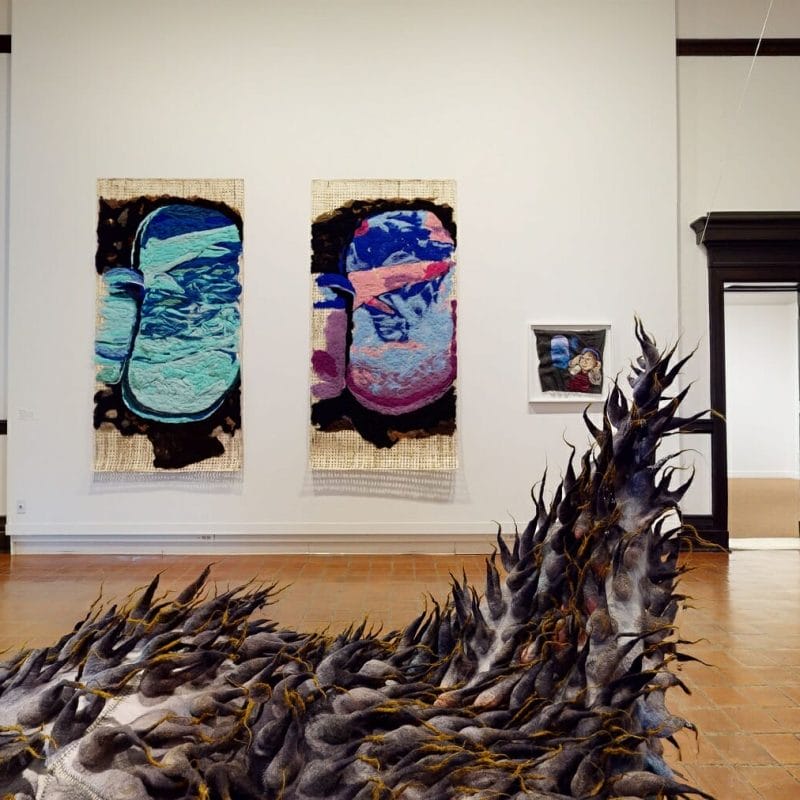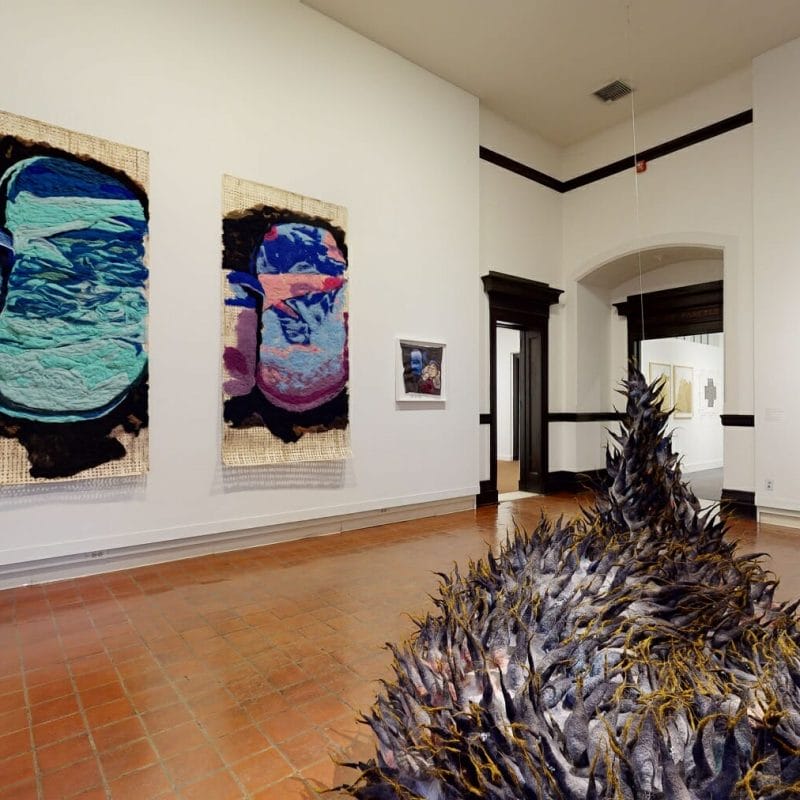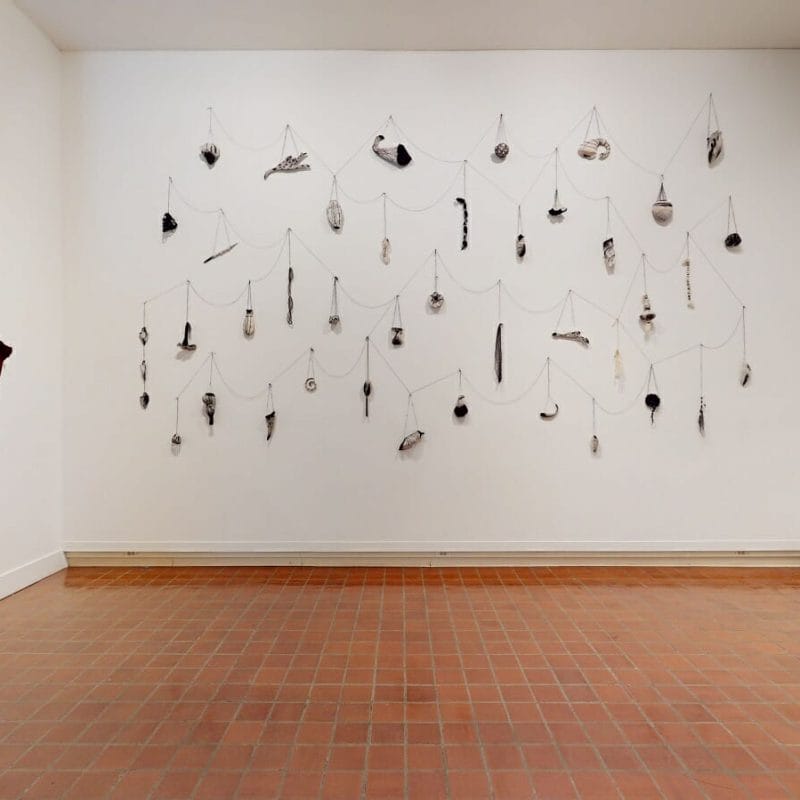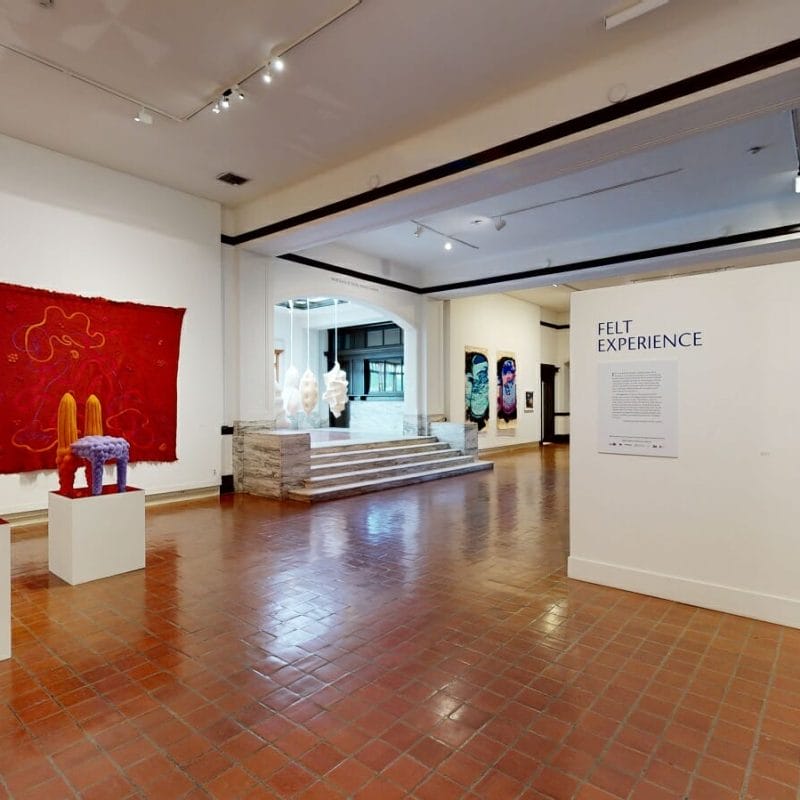Felt Experience
Artists: Marjolein Dallinga, Ruth Jeyaveeran, Melissa Joseph, Liam Lee, and Stephanie Metz
Curated by Katherine Gass Stowe and Sarah Freeman, Curators
June 18 – October 10, 2022
Brattleboro Museum & Art Center, 10 Vernon Street, Brattleboro, VT 05301, USA
Wednesday through Sunday, 10-4
info@brattleboromuseum.org | 802-257-0124
Felt is an ancient material, predating woven cloth. Used for utilitarian purposes such as clothing, rugs, saddles, hut coverings, and even armor, it has also been employed for centuries for ceremonial and religious purposes. Felt is typically made from sheep’s wool but can also be made from beaver or rabbit hair. Simple felting techniques that are still used today are thought to have originated with Eurasian nomadic peoples prior to the 6th century B.C.E.
Connecting us to the earth and its animals, felt is an extraordinarily sensorial medium imbued with history. Its magical smell and soft, forgiving touch heighten our aesthetic and physical experience with it. The title of the exhibition suggests the wonderful complexities inherent in this very humble material. Felt Experience can refer to understanding something through touch, and it can also refer to the deeply emotional responses evoked in the body by an object or place. Felt can awaken childhood memories of a predigital age when our direct interaction with the world helped to awaken our senses. Think of the protective feel of warm wool sweaters, the pungent smells of animals in petting zoos, or interactive childhood books with small patches of soft fleece meant to teach about touch. For most of us, our very first aesthetic experiences came to us from the natural world. Felt embodies a collective memory that transcends time. It symbolizes our shared histories and our connection to the earth.
Artists have used felt throughout time to convey a wide range of ideas. For Joseph Beuys (German, 1921–1986), the use of rabbit hair felt for his iconic Felt Suit, 1970, was at once an homage to everyday objects, a changeable material that emitted “warmth,” and a reference to his own story of survival. The industrial felt sculptures of Robert Morris (American, 1931-2018), produced in the late 1960s, highlighted the earthly influence of gravity and the physical action of manipulating material. Called “anti-forms,” these works were a direct response to minimalism. Fiber artist Sheila Hicks (American, b. 1934) has worked with many fibers, including wool, for decades and continues to innovate with color, scale, and volume to push the medium to new heights. “I think that is important, the wanting: the desire to hold it in your hands, to befriend it, to see if it bites,” Hicks said.
This exhibition surveys the work of five artists, based in New York, Canada, and California, who are working in felt today: Marjolein Dallinga, Ruth Jeyaveeran, Melissa Joseph, Liam Lee, and Stephanie Metz. Their studio practices range from the exploration of the personally and universally nostalgic (Joseph), to a desire to connect our interior and exterior worlds (Lee), to a coaxing out of the potential aliveness of the material (Dallinga), to an investigation of time and memory within repetitive motions of making (Jeyaveeran), to a masterful merging of opposing qualities through curiosity and play (Metz). (text by Katherine Gass Stowe and Sarah Freeman)


